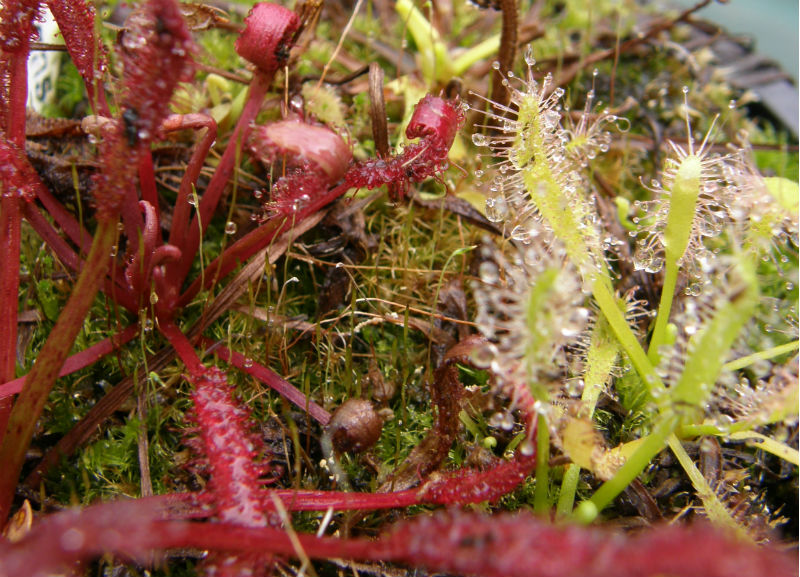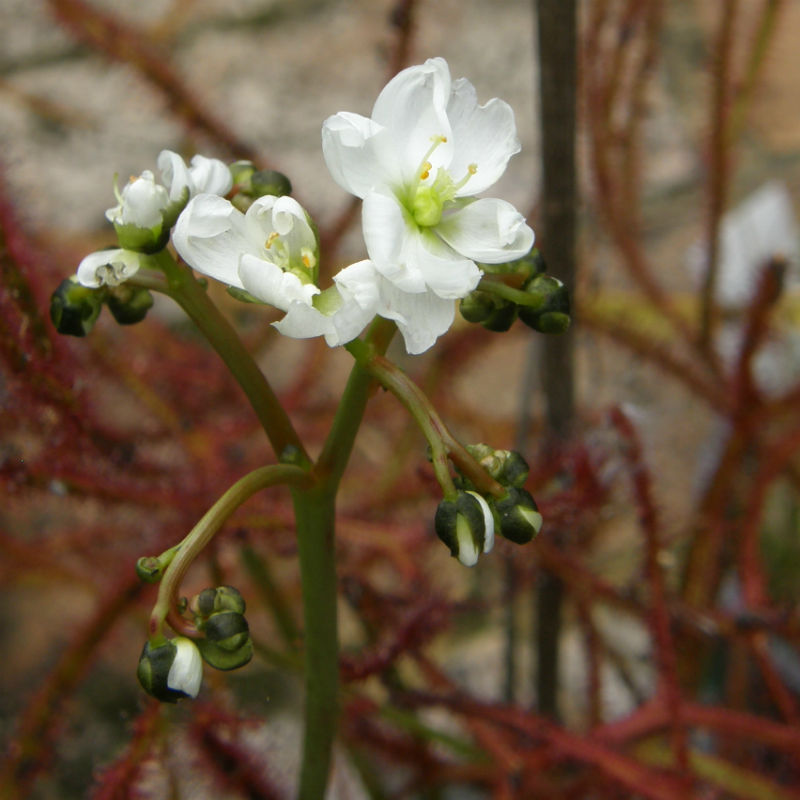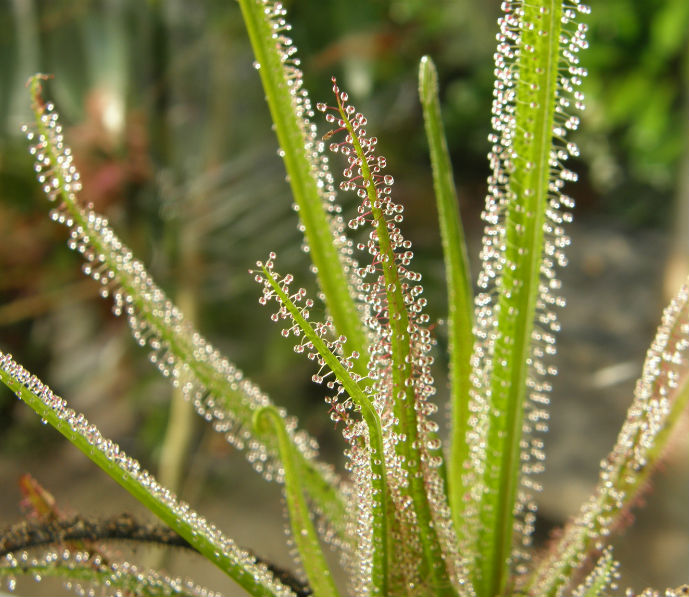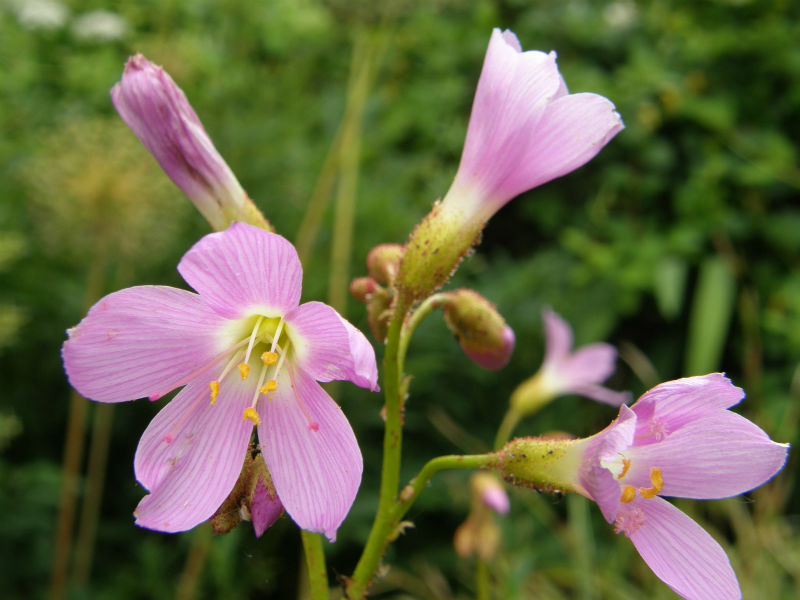Ever since I was a small child and we went for walks in Ashdown Forest in Kent, or dodged the midges bog trotting in Scotland, I have had a fascination for insectivorous plants – sundews (Drosera) in particular.
I also remember a school trip to Wicken Fen being captivated by pools containing Bladderworts. Above the water, innocent yellow flowers, below, the floating roots have little bladders which trap aquatic bugs.
The last time I saw Butterworts was on rocks seeping water on a path by a mountain stream coming off Dollywaggon Pike in the Lake District.
In the UK there are 3 native Drosera, D anglica, D rotundifolia and D intermedia. 3 native Butterworts, Pinguicula, P vulgaris, P grandiflora, P lusitanica. Nice synchronicity here; 3 Bladderworts, Utricularia, U vulgaris, U intermedia and U minor. All have adapted to gaining nutrients from insects in wet impoverished habitats, (often peaty/acid conditions).
Sundew, flycatcher, stickybacks
Insects are attracted by the nice-tasting sticky blobs, become entangled, the leaves turn in slightly and start to excrete enzymes which slowly dissolve the main body parts to extract nitrogen, phosphorus and other nutrients.




The three drosera above have been the easiest to keep going for someone like me who is not a specialist grower.
Drosera binata var. multifida

Messy grower. Hampshire Carnivorous Plants suggests growing it in a hanging basket as the natural propensity of the leaves is to flop. I’ve tried an arrangement of sticks bound with wire to create a ‘cage’ to keep the leaves upright which hasn’t worked very well.
Drosera regia is an imposing South African species, it’s sometimes touch and go to keep going. To be honest, aesthetically, at the height of summer it looks very grungy when full of flies. This is spring where it overwinters in the conservatory before going outside for the summer, hence lack of early fly supplies. On warm spring days it goes out for a few hours to harvest flies.


I enjoy these plants rather than avidly collecting and cosseting. I’ve grown D anglica and Pinguicula grandiflora from seed. D capensis very willingly self-seeds into every other pot it seems! I haven’t tried root cuttings.
I have had other drosera species which have required more specialist conditions than I could give them.

Hampshire Carnivorous Plants supplies specialist compost for seed sowing and potting on. Otherwise plants are kept in plastic pots stood in pot saucers topped up with, in my case, mainly tap water, although depending on where you live and the type of water you have, rainwater is probably better. Other plants have summer quarters in a wire basket fixed across our cattle trough fish tanks, the pot bottoms in contact with water.
I don’t feed them, in my view its up to them to catch their nutrients as they all go out for the summer. Those kept in colder conditions in the winter will wake up from their resting rosettes naturally as flies become more plentiful. Those in the conservatory go out for a few hours on warm spring days.
National Geographic: More about how insectivorous plants extract nutrients and how they evolved.

